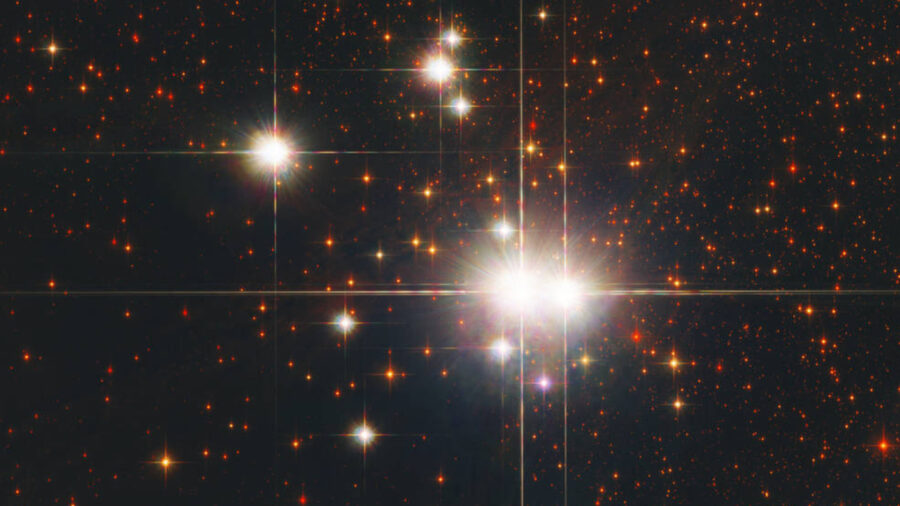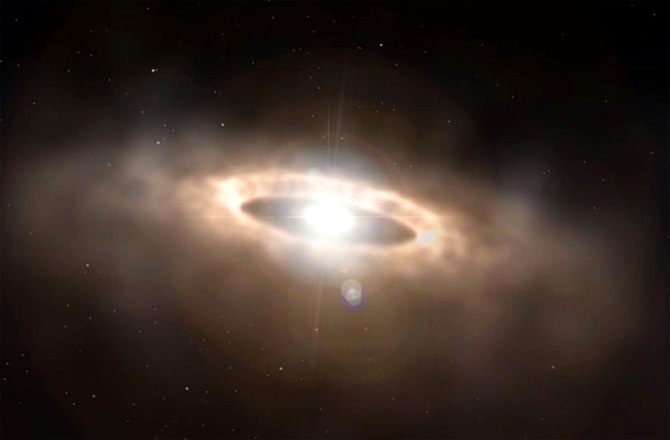Scientists Find A Way To Detect Planets Made Of Dark Matter
Researchers from the University of Madison-Wisconsin have theorized a way to use existing technology to detect planets made of dark matter, which is still theoretical, but getting closer to being proven.

One of the most interesting things about science fact is that it often ends up being very different from science fiction, like we see in Star Trek and Star Wars. For example, those franchises show us adventures where our heroes and villains battle on distant, colorful planets. In reality, many planets may be less colorful: Futurism reports that physicists at the University of Wisconsin-Madison have devised a method of using “exoplanet detection” to “help Earth-bound astronomers detect entire worlds out there made of the mysterious substance scientists refer to as dark matter.”
What is dark matter, though? This is where it gets confusing because this is not a form of matter that we can see or easily interact with. Instead, scientists have theorized such a matter must exist because of the effect it seems to have on other things that we observe.
The existence of dark matter remains purely theoretical, and many scientists would swear on their signed autograph of Leonard Nimoy that it doesn’t exist. And those who do study dark matter usually focus on just one particle of it at a time. However, this latest research proposes that this theoretical matter may exist on a much larger scale.
The team has calculated that dark matter may exist in the universe in giant, composite structures. In fact, they theorize that such structures may have the size and mass of planets and behave in much the same way. This is especially true if the structures are bound to a particular solar system.

How would we detect these dark matter planets, though? Right now, we detect other exoplanets (a fancy term for planets outside of our solar system that orbit stars of their own) by analyzing how such a planet affects the light of the star it orbits. As these planets pass by our observation telescopes, they dim the light of the star, helping us to confirm the existence of the planets.
The proposed method of detecting dark exoplanets builds off of this concept: basically, the researchers reason that if something disrupts the light of a star and it doesn’t seem to be a traditional exoplanet, it may be something more exotic. Specifically, they believe these could be their theoretical dark matter planets, ones which may at first look like a standard exoplanet until we examine the unique physics of the object. Of course, since we are still working on proving whether or not dark matter even exists (it’s currently the leading explanation for certain matter discrepancies in our observations of the universe), proving the existence of a giant dark matter planet is going to take a bit of time (we’ll probably be on Mars before then).
Speaking of taking time, it’s worth noting that the paper proposing this provocative new dark matter theory has not yet been peer-reviewed, so it remains to be seen whether it’s a viable theory or a bit of modern-day mad science. However, it’s fun to imagine an entire galaxy of hidden planets out there just waiting for us to discover them. And if Gene Roddenberry’s Star Trek taught us anything, it’s that we should get really worried if the dark matter planets are somehow filled with bumpy-headed warriors, green pirates, or evil versions of ourselves with rocking goatees.












